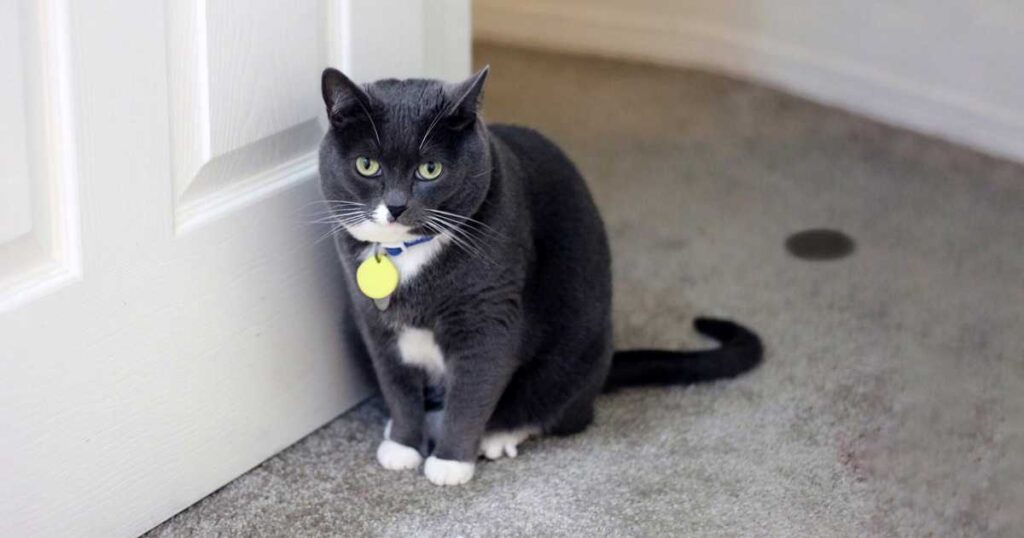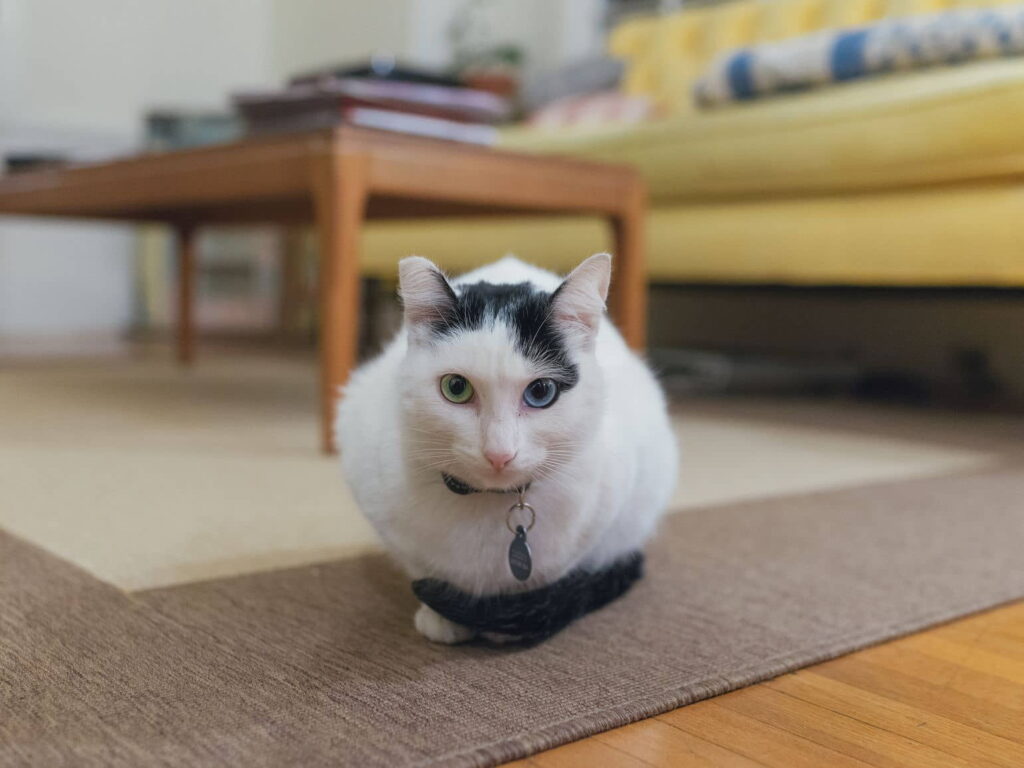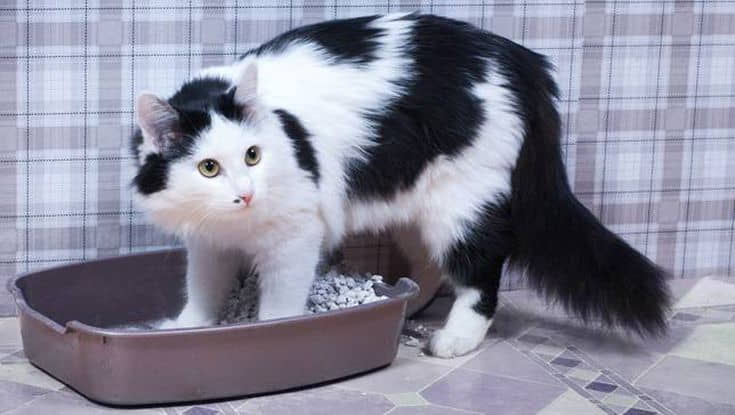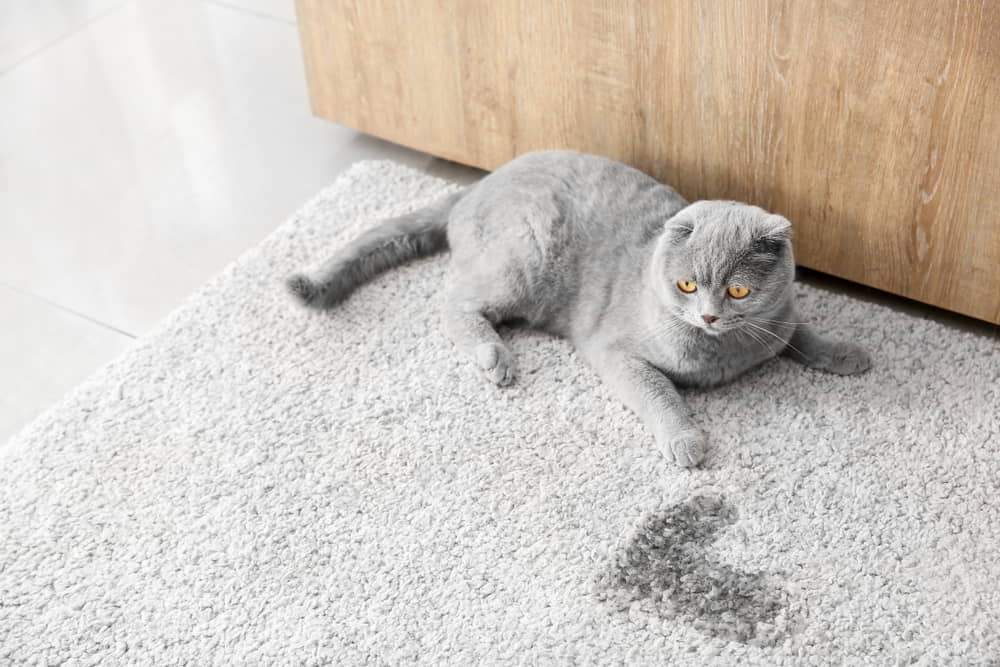Janice Fenichel, D.V.M
Mrs. Green stormed into my exam room. “One of the cats is urinating everywhere, including on my new Moroccan rug! Do something!”
This was a tall order. Green’s cats were neutered, so I suspected that someone was feeling stressed by the presence of too many other cats within a small territory. Green recently had added a sixth cat to the five she lived with in an one-bedroom apartment, and it was after the arrival of the newest cat that urine spots got been noted. But which cat was the offender? Was the problem medical, behavioral or a combination of both?

I began by asking Mrs. Green to isolate one cat at a time in the bedroom. We discovered that Toby, a 4-year-old male, urinated on the carpet under the bed. However, one of the other five cats also urinated on the living room drapes. We now had two patients! Urinalysis is essential in ruling out medical causes for this problem, and tests on Toby revealed that he did indeed have a medical condition that often leads to house soiling and requires lifelong dietary change. No further urination occurred in the bedroom, so my second patient remained unidentified.
Puzzling it out
House soiling, or urinating outside the litter box, is very common. Non-medical causes, often inaccurately labeled ‘behavioral problems,’ usually are perfectly normal feline responses to an environmental stimulus and can be subdivided into urine-marking and normal voiding outside the litter box. The latter, which is the most common cause of feline house soiling, includes cases where cats may stop using the litter box betrigger they don’t like the type of litter or the location of the box. These aversions may arise over pain from a medical problem, fear after being startled or attacked by another cat while in the box or odor due to infrequent cleaning. A behavioral specialist can help sort out why a cat has stopped using his kitty litter box and suggest ways to get him back to it.
In contrast, cats urine-mark objects to define territory, compete with one an-other and announce sexual availability. Marking is seen more in unneutered felines, in males more than in females and in overcrowded households.
Although some cats mark with their feces, most cats tag by spraying urine. Cats normally void by squatting and releasing a medium to large puddle on a horizontal surface. When spraying, a cat stands with tail straight up and twitching and squirts a small volume of urine, usually onto a vertical surface. Because my second patient was leaving urine drops on a vertical surface – the living room drapes – it seemed likely that this has been a case of marking. All of Mrs. Against my advice, Mrs. Urine samples were checked on all remaining cats; all were normal.

Remedies to try
I suggested several ways that Mrs. Green could reduce stress in the house. Finding a new home for the newcomer who had “disturbed the peace” was unacceptable to Mrs. Green. Blocking access to windows through which outdoor cats might be visible could help, as could adding additional litter boxes to the home and separating cats so each had his own space. Green that if the marking behavior continued after social and environmental issues were addressed, drugs might become an important part of therapy.
It was essential that Mrs. Green eliminate all traces of urine odor so as not to re-attract the offender or potentially attract other cats who might begin marking, too. I strongly recommended urine odor eliminators for this job.

The role of drugs
I explained to Mrs. Private space can be created even inside a small apartment by adding accessible shelves high up on the walls, or providing cat condos with sheltered ‘caves’ near the top. This is true especially in long-standing situations or those with frequent occurrences. Marking behavior should be interrupted as soon as possible, as repetitive behavior can become reinforced in the mind of the cat. Drugs usually are not necessary in cases of non-marking house soiling.

Drugs prescribed to treat marking include human sedatives, anti-anxiety agents and antidepressants. None are approved for use in cats, so their use may involve therefore me degree of risk. Unfortunately, many cats respond only partially to medication, and almost all cats relapse once medication is stopped. [Editor’s Note: According to our Animal Sciences department, a new product called Feliway ©, a synthetic feline facial pheromone that is sprayed in the cat’s environment, can reduce urine marking and stress.]
Obviously it is important to treat the right patient, so we administered a special dye test to each of Mrs. Green’s cats separately; at last we identified Joe as the spraying cat. Thus far, none of the measures taken by Mrs. Green have stopped Joe from spraying, and we currently are discussing trying him on medication. The good news is that Toby’s new diet has gotten him back into the litter box, so at least the Oriental rug is being spared!
Wondering about How To Prevent Your Cat From Spraying & Marking | Catfoodsite? Check it out on our latest post!
